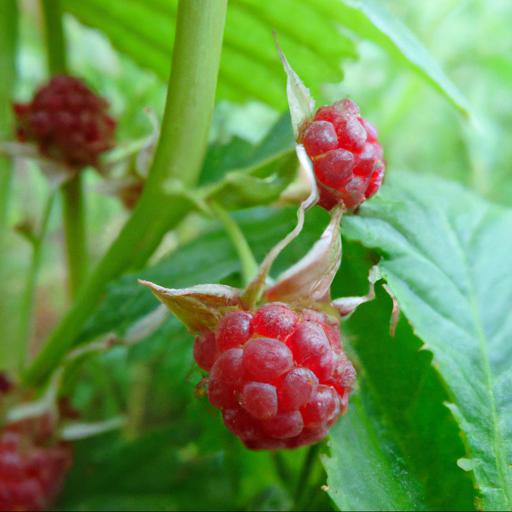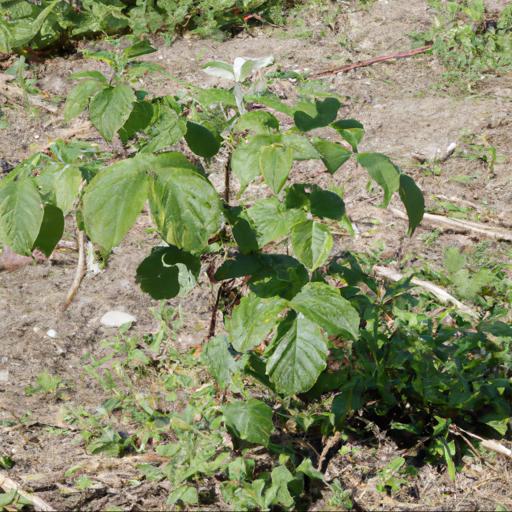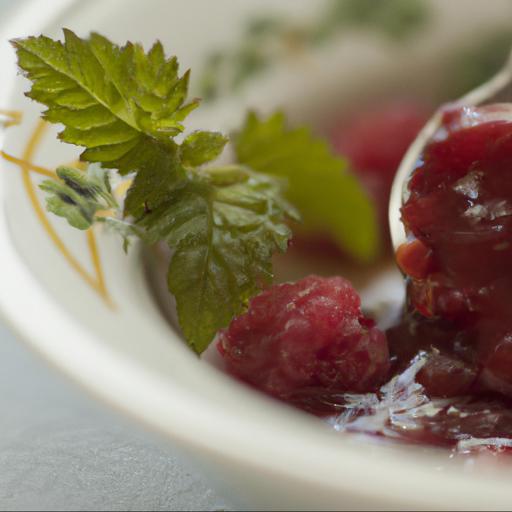Rubus idaeus zeva is a species of raspberry native to Europe and Asia. It is a deciduous shrub that produces red fruits with a sweet, tart flavor.
The berries are often used to make jams, pies, and other desserts. The plant has also been used in traditional medicine for centuries, and is known for its antioxidant, anti-inflammatory, and anti-cancer properties. In addition, the leaves and root can be used to make tea or added to salads for a unique flavor.
With its many uses and health benefits, Rubus idaeus zeva is a valuable addition to any garden.
Nutritional benefits of rubus idaeus zeva

A common member of the Rubus family, Rubus idaeus zeva is a variety of raspberry that has become increasingly popular in UK gardens. Native to Europe and parts of Asia, the raspberry is considered a surprisingly hardy and versatile plant, thriving in most soil types and providing an eye-catching display of delicate blooms in late spring and early summer.
The raspberry was first domesticated in the 1500s and since then has become incredibly popular among UK gardeners, thanks to its ability to grow in a vast range of environments and its nutritional benefits. Raspberries are an excellent source of vitamins, minerals and dietary fibre, providing your body with essential nutrients such as potassium, magnesium and manganese, as well as vitamins C, K and B They are also low in calories, making them a convenient and nutritious snack for those trying to watch their waistline.
In addition to their health benefits, Rubus idaeus zeva raspberries are particularly easy to grow, producing an abundance of fruit throughout the summer in a variety of delicious flavours. Planting in a sunny, sheltered spot will help ensure the best results, and because of their hardy nature it’s easy to look after them, with little to no pruning required.
Slugs and aphids can be a problem however, so it’s a good idea to keep an eye out for any pests and take action if necessary. If you’re looking for a hardy, low-maintenance plant with plenty of nutritional benefits then Rubus idaeus zeva raspberries could be just what you need. Best planted in sunny, sheltered spots, they’ll provide you with a delicious abundance of irresistibly sweet summer fruit, whilst also providing your body with essential vitamins and minerals.
How to grow and care for rubus idaeus zeva

When it comes to growing and caring for hardy shrubs like Rubus idaeus zeva, there are a few important tips and tricks to keep in mind. As a UK garden expert, I’d like to share a few of my top tips so you can get the most out of this member of the Rubus family. First, when planting this deciduous shrub, it’s important to choose an area that has plenty of light.
Rubus idaeus zeva prefer areas where they can get at least six hours of direct sunlight a day. However, they do not like to be exposed to continuous wind and should be protected in areas with strong winds, such as near the coast or in a windy valley.
Next, when watering Rubus idaeus zeva, it’s important to ensure that the soil around the shrub is kept evenly moist. This can be done by watering at ground level or by setting up a drip irrigation system to provide consistent moisture.
When it comes to feeding, feeding once or twice a year with a balanced shrub fertilizer can help to promote healthy growth and flowering. Finally, once Rubus idaeus zeva are established, it’s important to give them some occasional pruning. Pruning should be done either in early spring or during the dormant season after the leaves have fallen.
This will help to keep the shrub healthy and tidy by removing any dead or damaged branches. After pruning, it’s important to maintain adequate mulch around the shrub to protect its shallow root system and retain moisture. With a little bit of knowledge and some careful tending, Rubus idaeus zeva can become a beautiful and rewarding addition to any garden.
With the right care and attention, these shrubs can provide years of beauty and enjoyment.
Recipes featuring rubus idaeus zeva

As a UK garden expert, I’m well familiar with Rubus Idaeus Zeva, also commonly known as the Garden Raspberry. This unique member of the Rubus species, can be grown in most temperate climates, making them an ideal choice for UK gardeners.
The Rubus Idaeus Zeva is a great choice for those looking for sweet, juicy berries for their baking projects. With a vibrant taste and remarkable sweetness, the Garden Raspberry is a go-to for those wanting to elevate their desserts to the next level. Perfect for jam-making, adding to baked goods, or simply topping off a delicious crumble, Rubus Idaeus Zeva is sure to deliver a delightful taste experience.
For those looking to plant Rubus Idaeus Zeva, I recommend doing it during the spring or early summer. Give the plants plenty of sunshine and well-draining soil and make sure to water the plants regularly.
As with all Rubus species, keep an eye out for pests and make sure to prune the plants regularly. With the right care, you can enjoy freshly-picked Garden Raspberries in no time.
Health benefits of rubus idaeus zeva
Rubus idaeus zeva, more commonly known as red raspberry, is a species of berry-producing shrub native to Europe and parts of Asia. It is widely cultivated and has a long history of being used for culinary, traditional and medicinal purposes. With its many health benefits, it is no wonder why this plant has been so sought after and widely used throughout history.
First, Rubus idaeus zeva is an excellent source of vitamins and minerals, making it a great addition to your daily diet. It is particularly high in Vitamin C, which helps protect against throat and lung infections as well as strengthens the immune system.
It also contains significant amounts of Vitamin K, which helps prevent excessive bleeding, and Potassium which helps lower blood pressure, and Iron, a key mineral for healthy red blood cells. The health benefits of Rubus idaeus zeva don’t stop there! Studies have also shown that the plant is a powerful antioxidant and has anti-inflammatory properties, making it great for relieving pain and decreasing inflammation throughout the body.
In addition, it can help boost energy levels, improve digestion, reduce cholesterol and even aid in weight loss. Finally, Red Raspberry has a long history of being used for traditional and medicinal purposes.
For example, it has long been used for aiding in childbirth, treating colds and flu, and helping with skin irritations and wounds. It is even believed to help reduce the risk of cancer and Alzheimer’s disease due to its powerful antioxidants and anti-inflammatory properties. Therefore, if you’re looking to improve your overall health, adding Rubus idaeus zeva to your diet is definitely something to consider.
Whether you choose to drink it as a tea, juice it up or sprinkle it in your smoothies, adding this superfood to your daily routine can bring you a wealth of health benefits.
Bottom Line
Rubus idaeus Zeva is a new raspberry variety that is very heat tolerant and has a high yield. It is a vigorous grower and produces large, sweet and juicy raspberries that are ideal for fresh eating, freezing, and canning.
It is disease resistant and has a long harvest season. Zeva is a great choice for home gardeners and commercial growers alike.
FAQ
What is the scientific name of Rubus idaeus Zeva?
The scientific name of Rubus idaeus Zeva is Rubus idaeus L.
What are the health benefits of Rubus idaeus Zeva?
Rubus idaeus Zeva has many health benefits, including improved heart health, improved digestion, and increased immunity. It is also a good source of antioxidants and vitamins, and may help protect against certain types of cancer. Additionally, it may help reduce inflammation and improve skin health.
Where does Rubus idaeus Zeva grow?
Rubus idaeus Zeva grows in North America, Europe, and Asia.
How is Rubus idaeus Zeva used in cooking?
Rubus idaeus Zeva is commonly used in cooking as a fresh berry or as a jam, jelly, syrup, or pie filling. It is also used to make wines, liqueurs, and other beverages.
What is the nutritional value of Rubus idaeus Zeva?
Rubus idaeus Zeva is a type of raspberry that is high in dietary fiber, vitamin C, and manganese. It also contains some vitamin K, copper, and magnesium.
How can Rubus idaeus Zeva be preserved for long-term storage?
Rubus idaeus Zeva can be preserved for long-term storage by freezing, canning, or drying. Freezing is the most common method of preserving the fruit, as it can be stored for up to a year. Canning is another option, which involves boiling the fruit in a sugar syrup and then sealing it in jars. Drying is also an option, which involves dehydrating the fruit and then storing it in an airtight container.

